Pagan Alexandria's Blog, page 2
March 12, 2025
Dear Indie Authors: Here’s Your KU Exit Strategy
Recently there have been talks about how the current boycott on Amazon (well, that and the decision of people to cut expenses due to the cost of living) has severely and negatively impacted the livelihood of indie authors.
No, I’ve never been in KU (going to just get that out of the way upfront).
But I have been wide since day one, sell books every month as a wide author, and have worked in three publishing houses and studied publishing and KU in-depth.
Which is why I completely understand why people choose KU. I really do:
The opportunity to earn a liveable wage from the platform and write full time?The fact that you get a boost in discoverability as an unknown author?The built-in audience of readers that reduces the need to pour hours of time and energy into lengthy marketing campaigns?Trust me, I see the appeal. But from a business standpoint, I view KU more like a poison apple—it’s tempting, and it looks promising upfront. But it truly doesn’t make good business sense if you desire to be a global success, to be stocked in physical stores, and to make your books more accessible for everybody.
As a sustainable, long-term business strategy, I would not advise to solely build your brand and income on it. And that’s one very good reason why publishers don’t—despite having the connections and resources to produce physical books and get into bookstores, that’s a LOT of overhead publishers need to consider when they could just make bank through KU. Publishing bankrupts many small presses every single year. So have you ever thought about why publishers don’t pivot in spite of this?
Let’s talk about why I don’t like KU + what you can do to pivot out of KU, if that’s something you’re looking to do.
The business-side risks + cons of KU:ACCESSIBILITYHow easy it is to purchase or borrow a book influences book piracy, and believe it or not, book piracy is not a price problem… it’s an accessibility problem.
In fact, that’s exactly why the Steam marketplace exists in the gaming industry, they created it to mitigate this exact problem for games.
While there are exceptions to this (usually from people that don’t actually value books and would never purchase from you anyway), when given fewer options to easily access a book, people turn to pirating. And this is one reason why KU actually screws authors in the long run.
Just as Amazon is an American-based business, the majority of readers in KU are thought to be American readers. And I mean this with as much kindness as possible, but it’s always been a very American mindset to put Americans at the center of every conversation and completely ignore other countries in the world. The simple truth is that for many other countries, KU is not their primary marketplace for books. So when books are exclusive to the Amazon platform and cannot even be picked up by libraries (a problem I’ve encountered a LOT for many popular indie books I try to purchase myself), I, like many others, are not able to get my hands on them, which means we cannot support those authors financially.
If you want to go global, being wide will always be better since Amazon is not dominant in every market. And it allows more readers choice in choosing where and how to shop your books.
SUSTAINABILITYI’m not saying that KU doesn’t have it’s place. In fact, I even released a podcast episode recently talking about the one circumstance where I would (and in fact, do intend) to leverage the KU strategy.
But ultimately, there is too much risk in putting all of your income in one basket, in case KU disappears for any reason. Including the very real potential scenarios where:
You lose access to your Amazon account (sidenote: this happened to me in 2020 and I never got the account back. I lost 5 years of publishing work)A boycott eliminates your incoming royaltiesTikTok gets banned and suddenly, less people are able to find your bookThese things DO happen to people and the second two of these scenarios threatened to happen in the first 3 months of this year alone.
So even if KU does generate an amount of liveable income for you that you can quit your job and write full time… that is not sustainable when it can disappear the very next month.
Even if I did want to put my books on KU as an ‘exit strategy’ from a 9 – 5, I would likely find myself back at a 9 – 5 the moment something out of my control happened in the world.
So as a financial security blanket? I wouldn’t recommend KU. But as a discoverability tool, like I mentioned in my podcast episode? Absolutely. Except I wouldn’t do this for every series, or else I wouldn’t actually be diversifying my income streams. And that’s just smart business sense, truly—it’s playing the long game, a side of business that so many authors don’t consider.
CREATIVE FREEDOMThe other piece of KU is probably more personal, but it literally limits you in so many ways (with exclusivity clauses and a singular marketplace) that you might as well have traditionally published. I’m serious!
For me, leaving my publisher was to gain back more creative control, largely because they weren’t doing the right thing by me and I could achieve more on my own without jumping through all their hoops than they were able to offer me in return. So the last thing I want to do is limit myself again to a platform that tells me what I can and can’t do, makes it harder to reach global readers, and limits the strategies and campaigns I can run to sell more books.
If you chose indie publishing for creative control and freedom over your work AND your publishing business, I don’t understand what KU actually offers you (aside from the financial freedom and the temporary break in marketing).
Let me tell you this: KU is a platform that is based on page reads and conditions readers to not have to spend more money to access more books. They are a different type of buyer to your wide reader—they value things differently, make purchasing decisions differently, and shop in different markets.
So if you ever desire to go wide one day, all you are doing is delaying the hard work it will take to establish yourself in a wide marketplace and adapt new marketing and sales strategies that actually work for wide readers. Because wide readers are not looking for their next deal, and they’re not going to buy just because you dropped the price or ran a flash sale on your book.
(This is not to say that KU can’t play into a long-term strategy to go wide eventually, or won’t offer some sort of foundation. I’m just saying the full scope of work required cannot be completely avoided).
While wide authors don’t always have the financial backing upfront, they do have an amazing advantage that the first 5 – 10 years of their career is spent establishing a wide presence. They are already ten steps ahead of any author trying break out into a wide market. If you desire to be a global brand one day, you will not be able to escape or avoid the requirement of marketing your books wide, no matter how much success you gain through KU.
(A NOTE ON PAGE READS)As mentioned above, one of my biggest peeves with KU is that you’re paid on page reads. Which means, you need a fuck-ton of page reads to hit a reasonable amount of income earned.
But that’s not the most pressing issue.
The issue is that, readers can only actively be reading one book at a time. And this means, every single time a major author like Sarah J. Maas or Rebecca Yarros drops a highly anticipated release, the majority of readers in your genre are no longer reading your book—they’re reading theirs.
I’m a big believer that there’s no such thing as competition. People can own multiple books and get around to reading, reviewing and talking about all of them. But at least, as a wide author, you still get paid the FULL price upfront, even if that reader then takes six more months to get to your book.
If your reader abandons your book to go read the new SJM book, that’s a chunk of active time where you are not earning money.
So as a I said—if your goal is discoverability and you get a nice cash injection alongside that, that’s wonderful. But if you have no other way to earn a sustainable living every month when people aren’t reading your book via KU, your business is not set up to run profitably month to month–because this is a risk you haven’t factored in. And that’s not the reader’s fault—it’s your responsibility, as the CEO of your business, to solve for it.
So, how does one make the pivot out of KU?I know this is something that is easier said than done, and it certainly won’t be an overnight solution for anyone actively living on KU income. But if you desire to create a more sustainable business in the long-term and diversify your income streams to reduce risks, this is what I would suggest focusing on:
1) Always think long-termI am always thinking about where I want to be in 5 years from now, and the decisions, moves and investments that will get me there—NOT where I am currently and making decisions based on that.
Because currently, I could really use $5k/mth in book royalties coming through KU. But making that decision today impacts where I could be in 5 years time by being available through more marketplaces overall.
Another thing I consider with long-term is how I’m releasing each series and selling it. While I plan to take one of my series and put it in KU while keeping the rest of my work wide, I would recommend the opposite for anyone in KU. Take a series and make it wide on purpose.
Intentionally build a sales pathway from one of your KU series to that wide series. Make it the next recommended read at the end of your eBooks. Incentivise people purchasing it through other retailers or even directly through you. You actually have the foundations and access to an existing audience already—so use it to start driving your reader traffic off of KU over time.
2) Consider direct salesI know this is a conversation many authors are resistant to, but I only started selling directly through me as of last year (after I had 10 books published). And before you come at me complaining about all the overhead costs… I only sell eBooks directly through me, and it works.
I make it worthwhile by incentivising bonuses when people purchase directly through me as opposed to through wide retailers. I’m not saying that they can’t or shouldn’t if that’s their preference. But I am saying that when they purchase through me, not only do they get bonus chapters with their purchase, they can still send the eBook file directly to their Kindle with the mere click of a button.
It’s really not complicated, so there’s no reason for people not to get the bonuses. And often, people want them and make the direct purchase.
It literally costs me less than $50 a month to directly sell this way (the cost of my distribution softwares and some sales tax). And considering I’m earning the full $9 per eBook purchase? I don’t need that many sales per month to breakeven either.
As for generating a liveable wage? I’d certainly rather sell 500 x $9 books a month than require 3,000 readers to read x number of pages of my book through KU to hit the same income. That’s literally 500% more people I’d need to sell to, so if you hate the effort of marketing, it’s literally easier to do direct sales because you don’t need as much volume.
(P.S: If you want to learn more about direct selling the way I do it, you should get this training bundle).
3) Build a strong brandThis piece is honestly the most important one.
The reason your sales dip severely when you suddenly go wide after years of being exclusive to one platform is because outside of that platform and community, nobody knows who the fuck you are.
Just because you are making consistent sales doesn’t mean you have a strong brand presence. If your books and brand have not infiltrated different reader circles (with different TYPES of readers who have different purchasing behaviors) then you don’t have a wide enough brand presence.
If you do zero marketing outside of Amazon promotions and some social media, you don’t have a wide enough brand presence.
As I talked about earlier in this issue, my launch strategy involves a LOT of moving parts:
Press releasesEventsBookstore outreachARC outreachPromoting interviews and features I’ve securedSocial media campaignsSales and pre-order campaignsA book launch partyMy Substack newsletterMy podcast and blogsAll of this is building my brand with an incredibly wide net. Because the more people that hear about me, the more likely I am to create a global impact.
And yes, it requires work. A lot of work (sidenote: I am tired AF right now). So going wide is not a recommendation for anyone who isn’t interested in proactively marketing their books. But the tradeoff to this, of course, is ongoing financial instability and, possibly, never reaching your full potential with how many readers your work can reach.
Anyone who wants to build a long-term career knows the work is required, and worth it.Maybe you didn’t come here to build a career. Maybe you came here to write and make some money doing it, and there’s nothing wrong with that. But there’s also a distinct difference, so expecting the former while doing the latter will only leave you disappointed.
I recently wrote a blog post about the #1 key thing that is going to set me apart on my journey and truly build a global brand. This one thing is the difference between a six figure earning KU author and a 7 figure earning global brand author. Because yes, branding is doing more than just showing up in one place and expecting everyone to know your name—but it’s also so much bigger than that.
This piece is your messaging.
In the blog post, I share examples with Sarah J. Maas, Rebecca Yarros and Scarlett St. Clair — all MASSIVE mainstream authors right now. And I highlight exactly what sets them apart from other authors—why their brands are so easy to buy into, why they have movements and fanbases built around them, why their work continues to spark conversation. No, it’s not the spice, and no, it’s not their publisher or the resources they have access to. It’s their marketing messaging.
When you nail this piece down, you will find it so much easier to go wide because you will be able to speak beyond buying behaviors and attract people who simply love your stories.
P.S: If you found this advice on KU helpful, I have a bundle which I highly recommend diving into called The Audience Bundle .
This bundle contains four masterclasses that dive into different areas (audience building, brand building, content strategy and visibility strategy) which will all help you to go wider with your marketing efforts to support the transition to wide publishing.
I highly, highly recommend this bundle, and when I first recorded these trainings I did so with the intention to lay a foundational roadmap for authors. Get it here for just $127 .
March 3, 2025
Using Brand Storytelling to Sell Your Book And Grow Your Brand
When I was a debut author, I was presenting one of my very first writing workshops, and I wanted to use the opportunity to plug my novel.
So I did what comes most naturally to any born storyteller… and I told them the story of how that debut novel came to be — which details the experience of me going on an island holiday for a week, coming up with a ludicrous fantasy that my crush might show up, which developed into an enemies-to-lovers plot line starring a fiery redhead and an egotistical love interest.
I’ve told this story in interviews with journalists, in guest articles I’ve written, and on stages in front of dozens of people.
Today, I call that story one of my core, brand stories for the Stuck on Vacation with Ryan Rupert series. When people hear that story, they think of me and my brand.
It’s memorable, it sticks… and it sells my book.
This is the power of your story. Not the story within your book, but the stories that shape your existence, your decisions, and everything that you do.
People respond better to stories than they do to sales pitches. And it’s not that you shouldn’t be selling and pitching your work. But in a room full of 100 strangers who have never heard of you or your book, you’re always better off telling a brand story that will stick in their mind, than doing a half-assed sales pitch you don’t even feel confident rehearsing.
This is why I built my brand on storytelling. I sell my books through storytelling. And it’s storytelling that makes my audience feel emotionally connected to what I do, and what I stand for. It helps them buy into my books and brand over time.
In today’s article, I’m going to share how you can sell more books and build a stronger brand presence through your own brand stories.
 Brand Stories vs Book Stories
Brand Stories vs Book StoriesThe first piece of this is to differentiate the difference between stories that grow your brand, and stories that sell your books.
Brand Stories are stories that grow your brand. They help people get to know you, relate to you, and understand the types of books or work you create.
Book Stories are directly related to your books. They help people get to know the book itself, or uncover a factor as to why your book might be their perfect next read.
Each one is important, and we’ll dive into specific examples throughout this article.
 Identifying Your Brand Stories
Identifying Your Brand StoriesA lot of creatives get stuck trying to identify their brand stories because they start out writing for enjoyment and personal fulfillment. There’s no ‘deeper mission’ to writing a romance, or deeply philosophical purpose for their work.
There’s also nothing wrong with this. And it doesn’t mean you don’t have brand stories.
Brand stories develop as you further in your career. In fact, brand stories can be any of the following things:
a.) Brand Story #1: Your journey of authorship/publishing
This is also called an origin story, and there are two types of origin stories you could tell:
i.) Your journey-to-now origin story – this is a story about where you began vs where you are today. It details who you were and what you thought about writing, either before or as you were writing your first book, then jumps to where you are today, showcasing how far you’ve come, or how your mindset has evolved.
For example, my journey-to-now origin story could be framed a number of ways:
I started out traditionally publishing and now I self-publish, so I could tell the story of (beginning) starting out traditional, (middle) walking away from my publisher, and (end) creating massive success independently.I have been writing since I first picked up a pen, so I could tell the story of (beginning) knowing I wanted to be an author at 5 years old, (middle) querying my first series in year 12 and (end) having ten published books to date.I didn’t believe I could make money writing until recently, so I could tell the story of (beginning) working a waitressing job with my first publishing contract, (middle) quitting my job to become a self-employed content writer and (end) building a million dollar writing business in the present day.Notice how all of these stories help people get to know me, my beliefs, my values, and my journey? This is a high-level overview story that is easy to tell in your social media content, or at author events.
ii.) A micro-origin story – this is a story that hones in on a specific event from your journey. It could be something specific to what you want to be known for, what influences or inspires your books, or what has shaped your values.
For example, some of my micro-origin stories could be:
The exact moment I knew I wanted to walk away from traditional publishing, including the inciting incident that led me to that decision.The very first book I ever wrote and how it helped me realise the kinds of stories I want to be telling.The exact moment that helped me shift my mindset around believing my books could generate a million dollars.A micro-story is more specific, and can be used to promote a specific offer or speak to a type of person in your audience. You can use these in specific marketing campaigns or for dedicated events.
b.) Brand Story #2: Your writing evolution
This type of story showcases how you’ve grown or evolved as a writer. It can be particularly useful if you ever pivot genres or age ranges, or have honed in on a specific audience throughout the years.
For example, I could tell stories about:
Transitioning from fantasy to fairytale retellings.Evolving from feel-good contemporaries to darker, gritter romances.The moment I realised I was done writing for a teenage audience.c.) How certain beliefs/experiences have shaped your writing
This type of story is good if you do have a deeper, underlying reason for writing the books you write. For example, many people draw on their own trauma, or unique viewpoints and upbringing, to shape the stories that they tell. So sharing the underlying influences or experiences that bought a book to life can be a great story to tell.
For example, I could tell stories about:
How a negative review on Lanterns in the Sky almost broke me, but in hindsight, helped me realise I was writing for the wrong audience and needed to double down on the type of story I wanted to be telling.How the person I was ten years ago influenced my main character in Blood Magic.How working on myself and experiencing a healthier romantic relationship helped me write better romantic storylines.d.) Your personal inspirations
This last kind of story is more broad, but can be anything that inspires and influences your writing. It can be people, things and places.
For example, I could tell stories about:
How watching The Kardashians hugely influenced Coral and Kendra Klassan’s characters from Kingdom of Sirens and Monsters.How one of my childhood friends hugely influenced a storyline in Blood Magic.How going on a holiday to an island resort sparked the idea for Stuck on Vacation With Ryan Rupert. Examples of individuals with clear brand stories and messaging
Examples of individuals with clear brand stories and messaging
I recently watched Apple Cider Vinegar, and as I was watching the series, it reminded me just how powerful a brand story can be to building a global movement around your work.
If you’re unfamiliar, the series tells the real story of Belle Gibson and how she built a global movement around her healthy eating app named The Whole Pantry, which was founded on the (fake) story that she had brain cancer and healed herself naturally through healthy food.
While there’s a lot of negative to be said for Belle Gibson as a person, and I’m not at all suggesting that people build their brands on a lie or take any sort of lessons from Belle, she is a powerful example of how a story that resonates can gain global interest.
Your story is powerful, and sharing it is important. Do not underestimate the power of your story.
There are plenty of other brands that have been built on a (truthful) powerful story:
Rick Riordan started out as a school teacher. His Percy Jackson Series started out as a bedtime story for his son, who was struggling with dyslexia and ADHD. Rick Riordan had the idea to combine Greek mythology and demi-god children who shared the same disabilities, so that kids like his could relate to the characters and see themselves in heroes while learning about mythology through engaging adventure stories. This is a powerful brand story for someone whose books have now been adapted to film and tv. He even has an imprint with Disney.
Justin Beiber’s story of being discovered doing covers on YouTube at just 12 years old launched his entire music career. At the time, being discovered this way was pretty much unheard of, and since he was one of the first, it was an interesting story that only grew and grew thanks to his popularity and dedicated fanbase. He was also one of the first pop stars to build a huge following using platforms like Twitter, YouTube, and Instagram.
Stephanie Meyer’s idea for Twilight came to her in a dream, which featured a human girl and a vampire in a meadow who told her he could read her mind and was struggling with the desire to kill her – but was also deeply in love with her.
The Kardashians built a global empire that started in scandal, but ultimately, they proved that they could turn attention and influence into multiple million dollar businesses (e.g. creating wealth on ‘zero talent’). That, in itself, is an impactful story that has commanded global interest.
These are all examples of stories that can be used to tell journey-to-now origin stories, hone in on micro-stories, draw on personal inspirations, or even shape ‘book-based’ brand stories (which we’ll dive into next).
 Identifying Your Book Stories
Identifying Your Book StoriesYour book stories may come easier to you than your brand stories, likely because you have an experience for how your book came to be, or experiences that have shaped certain scenes or characters.
Of the above examples, Rick Riordan and Stephanie Meyer have the best examples – both of their stories detail how their original work came to be. But they could also be framed as journey-to-now publishing stories, so it completely depends on how you tell the story.
Book Stories are the stories to be sharing in your marketing, on social media, at events, and in publicity opportunities. Here are some examples of how it can look:
a.) The story behind your book
This is how your book came to be. The story I shared at the start of this article, about how I got the idea for Stuck on Vacation With Ryan Rupert, is a great example of this.
When I tell the story, I structure it like this: (beginning) where I was when I got the idea and what drew me in about the concept (middle) how the characters and storyline for Aubany and Ryan developed, and (end) how I wrote the first draft in a week and went on to publish it five years later.
b.) The story behind your characters
This is how you came up with your characters. I have brand stories on how I came up with both Lysander and Leif’s characters from Kingdom of Sirens and Monsters (you can listen to these stories here and here).
When I tell Lysander’s story, I often structure it like: (beginning) why I wanted to write a character like Lysander (middle) how I went about writing his character (end) how Lysander is different to other characters we read about.
c.) The story behind certain scenes
I have multiple book stories that detail how I came up with certain scenes from Stuck on Vacation With Ryan Rupert, which I sometimes tell at author events. I also have stories on what inspired certain scenes in my other books – such as the opening scene from Blood Magic (which you can listen to here).
 Examples of individuals with clear book stories and messaging
Examples of individuals with clear book stories and messaging
What you will find, especially after writing a handful of books, is that every artist has a common thread that connects all their work together.
I, myself, only identified my core themes after writing ten books, and I didn’t even realise that I had been telling the same type of story over and over, throughout different genres and storylines and character types.
I always write about a protagonist on a journey of self-discovery—whether it be finding her inner strength, or realising her worth, or overcoming something deeply personal. So this is a brand story I could tell that links all of my creative work together, even though all of it is vastly different.
When I think of really big authors like Sarah J. Maas, Rebecca Yarros and Scarlett St. Clair, their stories might look like ‘faerie/dragon/mythology smut’ on the outside, but what I see are global brands built around ‘powerful women’ characters and ‘desirable male’ love interests.
These women write stories that other women can see themselves in – and deeply relate to.
When I hear people talk about and relate to A Court of Thorns and Roses, I often hear how it woke them up to being in a toxic relationship and helped give them the courage to leave it.
When I hear people talk about and relate to Fourth Wing, I often hear how they love the depiction of a strong woman who shouldn’t have been able to thrive in her situation, and was able to prove everyone wrong through self-belief, wit, determination and resilience.
When I hear people talk about any Scarlett St. Clair book, I hear them talk about the representation of powerful women and men who support and lift up those women, rather than tear them down.
In the world that we live in, is it no surprise that these types of stories and experiences are popular, painstakingly relatable, and deeply desirable? It’s no wonder readers resonate with the messaging their brands are built on, because these authors stand for everything a women wants and feels on a day-to-day basis.
Your why behind the characters you write, and the types of stories you desire to tell, is deeply desirable to someone who has been through what you have been through.
Whether it’s found family, building strength and confidence, discovering one’s self, finding true love, or even overcoming a form of adversity, these are relatable themes that can launch a global movement – if you actually talk about the stories behind the books and characters you’re writing.
(P.S: if you found this article helpful for your book marketing, you may find this bundle of mini-marketing trainings I’ve put together especially helpful!)
February 21, 2025
9 Duologies Worth The Hype
There’s often debate in the reader space about whether duologies or trilogies are better, but personally, I just feel like they’re different reading experiences.
I love reading a good trilogy, but I often find myself a victim of the ‘filler middle book’ in an effort to stretch a series to be longer than it needs to be, and I don’t enjoy that. There have been plenty of trilogies where I haven’t felt that way, but it happens more often than not.
That’s kind of the beauty of a duology. Everything that needs to be there is included, because you don’t actually have the space to keep going.
And, if you enjoy a shorter series because you have a lot of books on your TBR and don’t want to commit yourself to something ongoing, unfinished, or seven books long, duologies can be a great option!
Here are some of the best duologies out there—based on books I’ve personally read, as well as reader recommendations.

A Dance of Thieves by Mary E. Pearson
I read this duology in audiobook format when I was working my night cleaning job a few years ago. It was the kind of duology that I couldn’t wait to keep listening to, and that stuck with me for hours afterwards. I really enjoyed it, though I was a little confused since I was new to Mary E. Pearson’s work and I hadn’t read her prior series.
This duology does slow burn enemies to lovers extremely well, and it also has found family which is heartwarming to read. The worldbuilding is detailed and very well done. Listening in audio format was both good and bad because it’s dual POV, so it had two narrators, and they would do the voices for the other character differently. This did throw me off a bit, but it also was kind of interesting because it was like being in each character’s head and seeing how they saw the other character. So just up to preference, I guess.
The second book was my favourite and the one I remember the most since I enjoyed it even more, and I highly recommend picking this one up.

This duology is a character driven romance set in a unique and atmospheric fantasy world. Rebecca Ross’ writing is beautiful and lush, making this an emotional and wonderful read. You can also expect slow burn romance and found family in this one, and the characters are incredible and will make you feel all the things.

One Dark Window by Rachel Gillig
This duology gives gothic fantasy vibes, with a beautifully eerie setting and intriguing characters. It’s another book where the characters are each very well done, with distinct personalities (and arguably, the side characters are even more enjoyable to read about!)
You can expect secrets, drama and magic, so definitely run to pick this one up!
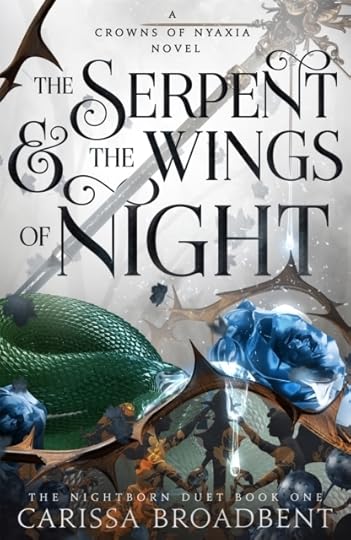
The Serpent and The Wings of Night by Clarissa Broadbent
Clarissa Broadbent is everyone’s new favourite author and I’m not even surprised. If you love a good romantasy and some vampires, you need to get your hands on this one.
In this duology you can expect enemies to lovers, angst, complex characters, and the most incredible worldbuilding. And if you love the story (and Clarissa’s writing style) there is another duology set in the same universe you can jump into, as well as a seperate standalone novel.
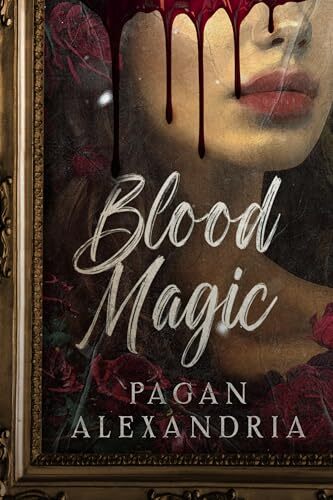
Blood Magic by Pagan Alexandria
When I say you won’t see the plot twist(s) coming in this one, and you’ll have theories for days.
This duology is set on a French-inspired university campus with dark academia vibes, where two rival vampire hunting guilds protect the students from the monsters that stalk the streets at night. When Fleur, a vampire hunter, is sought out by her rival, Percy Renaud, she discovers he has been turned into a vampire—and if they don’t find a cure, he will be staked.
This duology has a compelling mystery all the way to the end, enemies-to-lovers, and a world full of magic and supernatural creatures to dive into.
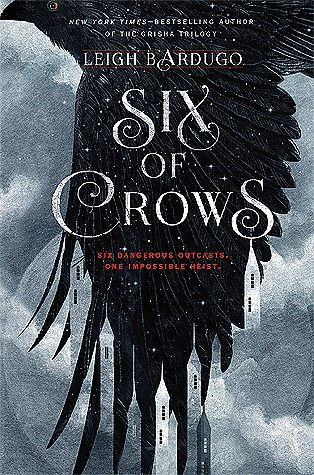
Kaz Brecker is one of the best characters ever written, and the walking definition of an antihero. He’s complex, driven, and he has a disability (points for extraordinary rep!) and is the most morally grey character you’ll ever meet. Obsessed.
Pair that with an incredible cast of characters (hello Inej and Jasper!) who basically do dangerous, near-impossible heists to make bank (set in a fantasy world?) There are so many reasons why this duology gets so much hype. It’s really that good.

These Violent Delights by Chloe Gong
So this duology is basically Romeo and Juliet, but with gangs, set in 1926 Shanghai. There’s enemies-to-lovers, a forbidden romance, and a super compelling and un-put-downable storyline where a mysterious illness is sweeping the city.
This one is more of a historical fiction, so if you enjoy that sort of thing, this could be the perfect next read for you!

Set in England, 1184, this is another historical fiction feeling book. It has an amazing writing style and the story spans centuries following a woman gifted with immortality by a shape-shifting god.
The story is incredibly beautiful and contains a slow burn romance with similar vibes to Divine Rivals.
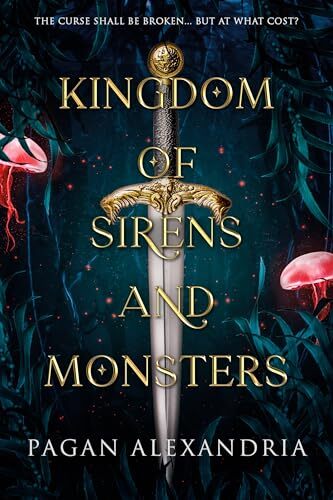
Kingdom of Sirens and Monsters by Pagan Alexandria
Set on an island inspired by Greece, this unusual duology follows Coral Klassan as she uncovers a dark family secret and is swept away to a world beneath the sea—only to discover that she must break a curse on a heartless prince in order to save her family.
This story is full of magic, mermaids, sirens and undine, and allows you to venture to three distinctly different underwater kingdoms. There’s also an unexpected romance ARC throughout both books, and some shocking secrets and twists to uncover along the way. If you love royalty, curses and magic, this duology is for you!
February 12, 2025
My Books As Wine Pairings
Getting a feel for a book can be tricky sometimes, which is why it can be helpful to compare books to something you already know familiarly.
There’s a reason why books and TV shows get compared to similar media a lot—it’s a really easy way to make a fast impression of what you can expect from the book. I’ve done this in the past when promoting my books, but I had a more creative idea today, which was to compare each of my book series’ to a wine.
 The Ryan Rupert Series
The Ryan Rupert Series
I can see this series being for rose drinkers. It’s got the fruity lightness of a white wine (since it’s a lighthearted, fun, silly sort of feel-good read) but it also has a romantic element, hence the rose.
This could just be my own experience, but I also see and hear of rose being a common introduction into wines, as it’s the easiest to drink.The most common feedback I’ve gotten on The Ryan Rupert Series is how easy it is to read, even for those who don’t read a lot. It’s fast paced, engaging, and difficult to put down. And it’s funny and swoon-worthy, which is hard to go wrong with.
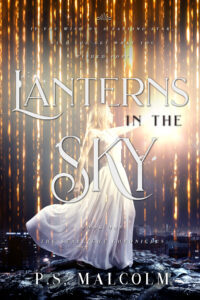 The Starlight Chronicles Series
The Starlight Chronicles Series
This series is definitely a sparkling wine, which is my least favourite type of wine. There was a time this was my favourite series I’d ever written, but I’ve since gone on to write masterpieces like Blood Magic, so the wine pairing fits in a sort of ironic way too. But I digress…
The main reason this series is a sparkling wine is because sparkling wine is associated with glitzy types of occasions, and the world of The Starlight Chronicles is filled with glittering balls, magic and royal romances. There’s also a true, darker undertone to the series, and there are many serious themes that get explored (including grief, war and mental health), but for the most part, it’s a story detailing the power of friendship, strength and love over evil.
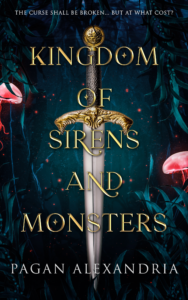 Kingdom of Sirens and Monsters Duology
Kingdom of Sirens and Monsters Duology
I picked an orange wine for this series because they tend to have bold, complex flavours that can truly vary. I’ve often been told they’re a ‘wildcard’ wine and you never really know what you’re going to get.
That really describes this series in a nutshell. I was writing something a little but unique on purpose, which resulted in mixed opinions on the characters. Overall, it’s an enjoyable series (as orange wine can be) and many people love it, but for some, it may be too bitter and therefore not for them (the way orange wine often is).
For a handful of people, I think this series is the wildcard they are looking for. From the inclusion of undines, to the unexpected romances and villain redemption ARCs, the many twists and turns along the way and the unique blend of two fairy tales in one, this is a series that won’t be for everyone, but definitely brings something new and fresh to the genre.
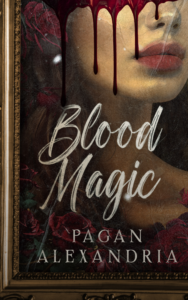 Blood Magic Duology
Blood Magic Duology
This probably goes without saying, but Blood Magic is a red wine. I even think it starts off as a lighter, fruiter wine such as Grenache and moves into a bolder, darker wine like a Cab Sav when you reach book two.
When I wrote Blood Magic, I wanted to write a world that felt dark academia inspired. The kind of book you could curl up with on a chilly evening and enjoy a glass of red with. The kind of book that had tension and spice, a compelling mystery, a cast of great characters, and a great underlying theme.
Blood Magic is all of this. It’s a book that starts off seemingly normal, with a great twist early on, and gradually becomes more compelling as you start to pull apart the thread of the world within. Slowly, you realise everything is not as it seems, and the mystery reveals itself in a way you never expect. But by then, you’ve fallen deeply in love with the characters, and you need to know what happens next.
The book is bold and complex in the sense that it’s my most audacious plot twist yet, my most complex magic system yet, and my most mature writing to date.
If you enjoyed this and you’re interested in learning more about any of my books, you can head here to read more (and even download a free sample of each one).
10 Fantasy Romances To Binge This Valentine’s Day
If there’s anything I love to read, it’s a good fantasy romance book. And given that this is the genre I most frequently write in, I’ve been reading it for a solid fifteen years and counting now.
If you’re looking for a romance to sweep you off your feet this Valentine’s Day, I’ve put together this list of older and newer releases, each one with a romance that will capture your heart. From sweeter, sensual romances to hot and steamy reads, this list covers a wide variety of books.
I’ve also ordered the list, starting from YA (no spice) through to NA (spice) to help you gauge what you may or may not enjoy reading. Take a look and see if a new series catches your eye.
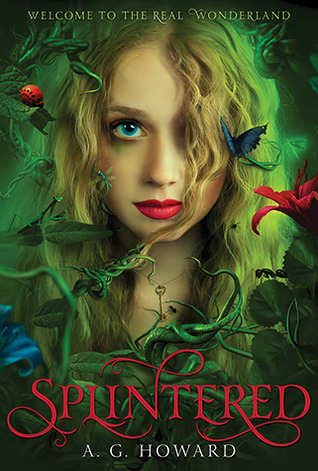 The Splintered Series
by A.G. Howard
The Splintered Series
by A.G. Howard Even though this series first debuted in 2013, it’s one of my favourites to this day.
A.G. Howard was one of the first writers who taught me what was possible with my own writing. From her lush, lyrical prose to the absolute chokehold her characters put me in, I was obsessed with this series and it was a huge source of inspiration for where I aspired to get my own quality of writing to.
This is an Alice in Wonderland retelling and we’re spoiled for choice between two love interests: Jeb and Morpheus. And while I know Jeb isn’t everyone’s favourite pick, personally? I unapologetically choose both.
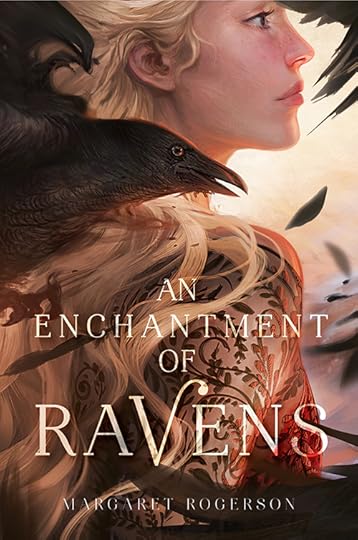 An Enchantment of Ravens
by Margaret Rogerson
An Enchantment of Ravens
by Margaret Rogerson I don’t think this book is as well known as her other books, but it’s personally my favourite. I really enjoyed reading this, probably the same way I’d thoroughly enjoy reading a lighthearted contemporary if that genre was my preference.
I do feel that Isobel and Rook suffer from a case of instalove in this, but it’s quickly overlooked by the wonderful and wholesome fae storyline, and the sweet romantic moments. It’s a very whimsical book, and while it’s compared to ACOTAR I don’t feel that it’s anything like it. Instead, it’s uniquely its own thing, and that’s what makes it such a gem of a read.
 The Folk of the Air Series
(The Cruel Prince)
by Holly Black
The Folk of the Air Series
(The Cruel Prince)
by Holly BlackThis absolute masterpiece of a series fanned my love for enemies-to-lovers. The first book was good, but the second book was fantastic. The angst and tension in this one was simply delicious, and the worldbuild and story was also amazing.
I really love all of the characters in this series, especially Jude as she’s such a strong, ambitious and interesting to read character. Carden is also wicked and charming in all the best ways a fae can be, and I could not recommend this series enough.
 The Cursebreakers Series
(A Curse so Dark and Lonely)
by Brigid Kemmerer
The Cursebreakers Series
(A Curse so Dark and Lonely)
by Brigid Kemmerer Once again, the first book in this series was good, but the second book? Man, oh man.
Grey is one of my all time favourite characters, so when we actually got his POV in the second book, and he had a romance ARC all of his own? That’s when I fell in love with this series.
Grey and Lia Mara’s romance is sweet and sensual and so full of adoration, I am completely head-over-heels for it. This series is also a fairytale retelling (Beauty and the Beast) and it has disability rep, which are all positive attributes of the series.
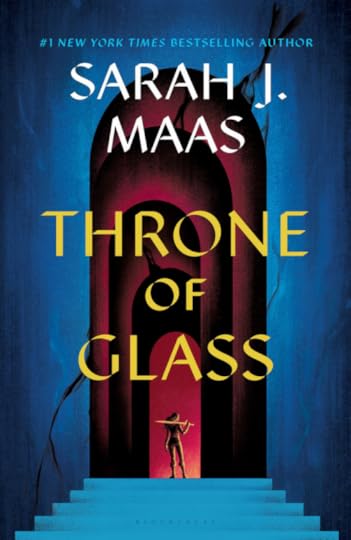 The Throne of Glass Series
by Sarah J. Maas
The Throne of Glass Series
by Sarah J. MaasY’all thought I was gonna put ACOTAR on here, huh? Well if you’ve read this post from me, you’ll know that I’m a Throne of Glass girlie and have never been the biggest fan of ACOTAR.
For me, Throne of Glass was just more interesting. I loved the cast of characters, the storyline, everything about it. And the romances? Whew!
I will admit, Aelin and Rowan’s romance is not my top pick from the series, but give me Dorian and Manon, or Elide and Lorcan, or Chaol and Yrene any day. The fact that I adore three separate character pairings from this series over the main paring means it has a well deserved place on this list.
 Kingdom of Sirens and Monsters
duology by Pagan Alexandria
Kingdom of Sirens and Monsters
duology by Pagan AlexandriaThis duology will take you by surprise when it comes to the romance.
Another fairytale retelling (Snow White x The Little Mermaid), it has a cast of complex and interesting characters that gradually builds into an unexpected romance over the course of two books. Like Splintered, you’re given two love interest choices: Lysander and Leif, and this series doesn’t disappoint.
Aside from the romance, there’s also an enjoyable story and a unique, underwater world that hosts a number of fantasy creatures, including sirens, undine and mermaids.
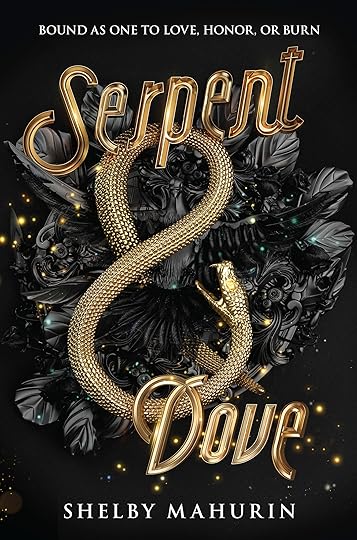 The Serpent & Dove Series
by Shelby Mahurin
The Serpent & Dove Series
by Shelby MahurinHands down, one of my favourite series of all time. The magic in this is elite, the worldbuilding is wonderful, and the enemies-to-lovers pairing between witch-hunter Reid and witch Lou? *Chefs kiss*
Not only this, but the other characters in this series make you feel things. I personally felt that the whole series was beautifully written, with an enjoyable storyline, with just the right amount of spice and romance.
 Kingdom of the Wicked
series by Kerri Maniscalco
Kingdom of the Wicked
series by Kerri ManiscalcoOof. This book really made me feel things. Not only did it have an engaging plotline and mystery, I really enjoyed the romance between demon prince, Wrath, and witch, Emilia. Especially when we got to book two, and things heated up a lot.
There was so much about Wrath’s character that I loved, from his brooding, intoxicating personality, to his softer moments. The chemistry between these characters was addictive, and for that reason alone I would highly recommend this series.
 Fourth Wing
series by Rebecca Yarros
Fourth Wing
series by Rebecca YarrosThis (and the sequel) is probably one of my favourite books of all time. It hooked me in a way many books fail to do so, and stayed with me for months afterwards. I found myself re-reading it not that long after I finished both it and book two.
Personally, I want nothing to do with Rhysand (y’all can have him) because Xaden is my man. Never has there ever been a male character I’ve been more smitten with. This man is everything. Sexy, supportive, brooding, confident… I could go on, and I will if we don’t wrap this list up fast.
The romance between him and Violet has my heart in every single way. It’s so, so good, and I absolutely love them together. And we haven’t even touched on the incredible worldbuilding, magic, dragons, storyline, or any other characters yet (all of which are absolutely phenomenal).
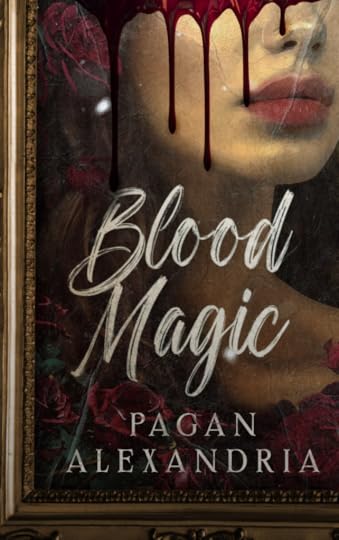 Blood Magic
duology by Pagan Alexandria
Blood Magic
duology by Pagan AlexandriaThis book reads more like a paranormal romance until you get to book two, but damn if it’s not worth it. It also doesn’t release until April, but you can add it to your TBR and pre-order it now.
A dual retelling of Rapunzel and Sleeping Beauty, this series has a classic, vampire x vampire hunter, enemies-to-lovers pairing where the protagonist literally tries to kill the love interest before they fall into a tantalizing, steamy romance. There is so much tension between Fleur and Percy, and a compelling mystery to follow the whole way through.
Not only this, but the cast of characters are wholesome and lovable, and the plot twist in this will leave your jaw on the floor at the end.
February 10, 2025
Reviewing the OG Harry Potter Games for PS2
When I was growing up, my mum would often take me to the video shop (back when VCR was still a thing) and let me rent a PS2 game to play for the week. And if I really liked a game, it would sometimes appear as part of my Christmas presents for that year (a copy to keep and play whenever I wanted? Now we’re talking!)
I have a very distinct memory of renting out Harry Potter and The Philosopher’s Stone for PS2, getting about 10 minutes into the game, and having the game relentlessly crash every time I tried to go through the Fat Lady portrait. Eventually, I had to accept the game was unplayable, and as a Harry Potter fan in my youth, my disappointment was huge.
Luckily, my mum noticed this, and that year I received Harry Potter at the Prisoner of Azkaban for PS2 under the tree! This ended up being the one and only Harry Potter game I would own and play in my childhood, but I had always wondered what the other games were like.
Fast forward to 2021, I got hooked watching Call Me Kevin’s Harry Potter PS2 Gameplay Series, and that urge to play all the games very quickly came back to me. But I didn’t own a PS2 anymore and I didn’t really consider buying one until I met my partner. I bought a PS4 to the relationship, he bought a Nintendo Switch, and instead of having kids, we decided to co-own a PS2 and bought one together from a local retro game shop.
(Unlike my sturdy PS4, our fragile and short-owned PS2 went on to kick the bucket once we attempted to move it across the country to Perth, so we ended up having to re-buy a PS2 once we got here, but I digress).
Once we arrived in Perth, we quickly discovered that:
a.) There are at least 3 excellent retro game shops in the area, most of which stocked all of the Harry Potter PS2 games.
b.) There’s also an amazing PS2 game range on Facebook Marketplace here in Perth.
c.) All of your local Cash Converter shops have tons of old school PS2 games. I ended up finding a rare copy of Futurama (which I also used to own) as well as a handful of Sims game for nostalgia purposes.
Being in a more resourced area, acquiring the Harry Potter games had become more possible than ever. So, over time, we gradually accumulated most of the Harry Potter games for PS2—starting with the most popular game, Prisoner of Azkaban, which can be found pretty much everywhere, then following with copies of Order of the Phoenix and The Half Blood Prince, and eventually we managed to find a copy of Chamber of Secrets.
I have already decided not to play Goblet of Fire since it’s not open world and instead, story based. I also won’t be playing Deathly Hallows since, from what I hear, it’s essentially a wizarding shooter game (no thanks).
The only other game I’m still chasing is the elusive, Philosopher’s Stone which I never got to fully experience. Finding a copy has been extremely difficult, but I also hear the gameplay is among the most challenging, so I won’t be upset if I never get to play it. However, if I ever do find it, I would play it just on principle to experience it.
With all of that said, let’s review the copies I do own and have played from start to finish:
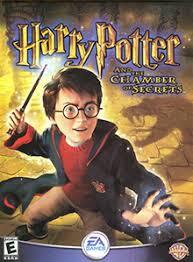 Harry Potter and the Chamber of Secrets
Harry Potter and the Chamber of Secrets After hunting for months, I finally got my hands of a copy of Chamber of Secrets. This game is often praised at the ‘best game of the series’ in the community, and I think nostalgia has a lot to do with this. For many, this was the childhood game they grew up with, not Prisoner of Azkaban, and it was also their first introduction into ‘open world’ Hogwarts that offered that student-like experience to people.
Needless to say, I was eager to try it and to compare it to Prisoner of Azkaban… and I have mixed thoughts for sure.
The introduction feels really long in comparison to Prisoner of Azkaban (in which, you get straight into the action and gameplay, and arrive at Hogwarts fairly quickly).
In this game however, you spend a lot of time at the Weasley Burrow, and then solving puzzles in Diagon Alley, and then defeating the Whomping Willow, before you even get to Hogwarts. And for me, this took a whole day of gameplay alone. I also got stuck in Diagon Alley for a while, and as a kid, I think this would have frustrated me into not playing the game. But I can also see how these early parts of the game expand the world for the players and offer more to be experienced, so I think it’s just a personal preference for me.
Once I got to Hogwarts however, I was really impressed by the world. It is a lot more expanded than Prisoner of Azkaban is, with additional floors and corridors to explore, extra classrooms, and the detail given to the world feels more whimsical. I was fascinated exploring the castle, including areas I’d grown accustomed to expecting, and discovering something completely different in it’s place.
Initially, this gave me a lot of anticipation as I thought I would experience more content in the gameplay overall, but I quickly realised that a lot of the new classrooms were recycled settings (lots of repetition) and that the world felt bigger, but the attention to detail had a cap. As a kid, it doesn’t matter as much because it just adds to the excitement of playing the game, but as an adult it left a lot to be desired.
The puzzles also frustrated the ever living heck out of me! They were unnecessarily challenging and tediously long, to the point that I struggled to defeat a lot of the boss fights (this could also be due to the controller configuration, as sometimes timing would be off or characters would just leap in whatever direction they felt like. And the camera controls, don’t even get me started on those!)
I still enjoyed many of the puzzles despite my frustration, but I was definitely relieved once I finished the game. I’m not sure it’s one I’d ever pick back up again, but I’m glad I had the chance to play it.
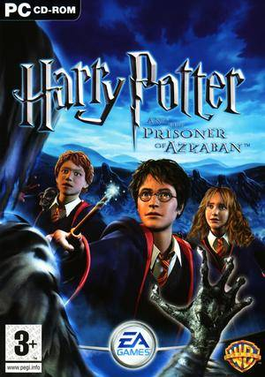 Harry Potter and the Prisoner of Azkaban
Harry Potter and the Prisoner of Azkaban For me, this game was all nostalgia since it’s the one I grew up with. Prisoner of Azkaban is also my favourite book and movie in the entire franchise, so it’s hard not to enjoy playing the game.
This game gave me the experience of ‘being a student at Hogwarts’ which is what I really loved about it as a child, and I’m sure that’s what a lot of people enjoy about Chamber of Secrets as well. In both games, there is an open world aspect, and the autonomy to attend classes, learn spells, and explore the castle. But in this one, your friends accompany you every step of the way, and you can even switch characters (I loved playing as Hermione in my youth as I felt I could best identify with her).
The game play is also really fun. I remember getting stuck on Neville’s ghoul level for a really long time as a kid, which wasn’t fun, but once I progressed through the entire game I unlocked so many more cool spells and areas of the castle. I also feel that the outdoor world for Prisoner of Azkaban is much better and more developed than Chamber of Secrets.
Re-playing it as an adult, I finished it in one day (in one sitting, actually) — it’s not a long game, but it feels packed with content due to the variety of levels and puzzles you complex. I enjoyed playing it from start to finish and, even as an adult, had the urge to replay it as soon as I finished it.
I think this is a game that really stands the test of time for that reason; it has all the right elements of an enjoyable game, and even though it’s ‘dated’ by todays standards, it offers a fun play experience and the right pacing to keep you engaged all the way through. It also cuts anything unnecessary, so while the world is not as ‘big’ as Chamber of Secrets, it feels like everything included is intentional and offers value to the play experience.
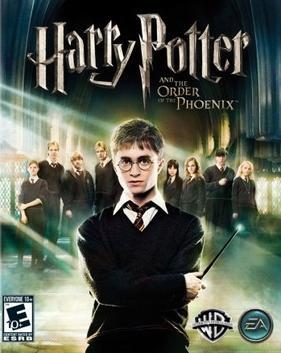 Harry Potter and the Order of the Phoenix
Harry Potter and the Order of the PhoenixThis is the second Harry Potter PS2 game I jumped into once I finished Prisoner of Azkaban, and by this stage, the graphics and world design had changed a lot from the early games.
I personally really enjoyed this game, and while Hogwarts looked quite different to the one I grew up running around in, I felt like this one was easier to get lost in. It took me all of this game plus some of the next one to finally learn my way around the castle. I feel like some of the initial ‘whimsical’ wonder of the early game worlds had been traded in for a more realistic, quality and ‘impressive’ game experience, which wasn’t necessarily bad, just different. But it does change the entire feel of playing the game. Still, the castle feels alive and full of things to discover and engage with, which is nice.
I also enjoyed that there were more ‘known’ NPC characters to engage with instead of just Neville and Draco, thanks to the DA plotline of this game. Casting spells was sometimes frustrating but mostly fun, since it required learning different wand movement combinations on the joystick instead of just pressing a button.
The later games are still puzzle platformers at heart, so while you’re not engaging in random obstacle course type puzzles during classes anymore to unlock a spell, you still end up doing all kinds of puzzles around the castle itself (sidenote: having Harry scale the walls of Hogwarts on multiple occasions to complete ‘fetch quests’ was an anxiety inducing experience).
However, just for added gameplay features, something that really started to annoy me about the later games was the sudden and frequent demand for duels! Every time I was trying to get somewhere or complete a quest, a Slytherin would appear out of nowhere and demand we spend 10 minutes of gameplay dueling—just to lose miserably each time. Like, we get it, you suck, can we stop doing this now?
Overall, I really enjoyed it for the different and fresh take on playing at Hogwarts, but towards the end the game started to feel quite monotonous. I enjoyed it enough to want to pick up the next game in the series, so on to that review.
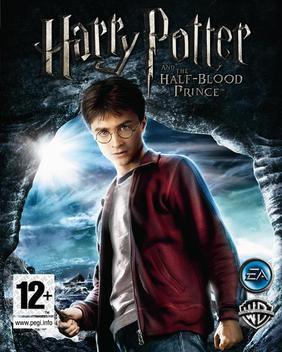 Harry Potter and the Half Blood Prince
Harry Potter and the Half Blood Prince This game feels very similar to the previous one, but it does offer a couple of standout differences.
For a start, dueling was improved in this game (mainly because casting spells also got simpler) which made it more engaging every time you had to do it.
They also added potions mini games into classes, and personally, I really enjoyed this aspect. It was quite fun and engaging to try and complete a potion successfully in a set amount of time, and it added a lot of value to the game. I wish it had been included in all of the prior games.
While the castle feels exactly the same as the previous game (I would even argue less engaging and slightly emptier), exploring it and getting around feels more streamlined due to the inclusion of fast travel via certain portraits (offering ‘shortcuts’) and Nearly Headless Nick guiding you more effectively from quest to quest.
I’d also say that this game had some of the best intentional dialogue and humour in all of the games, probably because it was also the funniest movie of the series and a direct adaption from that.
In hindsight, reflecting on this game, it felt like an improved extension of Order of the Phoenix—almost like they used that game as a framework to build and improve on this one (though it’s a shame they didn’t continue this and switched directions completely for Deathly Hallows). As a result, Half Blood Prince almost feels like DLC for Order of the Phoenix, like they’ve added a few extra features and expanded various things, but otherwise, it’s very much a same-but-different play experience.
Final VerdictIn conclusion, I think there’s lots of pros and cons for each game, and different things they bring to the table that give them a fully unique play experience (making it worth purchasing all four of them).
But the winner, in my eyes, will always be Prisoner of Azkaban, and I promise it’s not just because I grew up playing it. Though they’re all very different games, I stand by my assessment that Prisoner of Azkaban really ticks all the boxes:
Like Chamber of Secrets, the world offers that ‘student at Hogwarts’ feeling with a huge, open world to explore and lots of secrets to uncover, without unnecessary, repetitive rooms and settings. Plus, it has the most consistently developed areas throughout the entire game (it doesn’t feel like they ran out of budget and patched up certain areas, everything feels intentional).Like some of your later games, the gameplay is fast, engaging and streamlined. Every quest is exciting and isn’t ridiculously difficult to the point that it’s no longer fun. There’s a great balance of puzzle levels and exploring. The storyline moves the game forward well, and you can finish it in a day and still feel like you haven’t exhausted exploring the castle. For those who loved the flying aspect of Chamber of Secrets, where Harry unlocks the broom and can fly anywhere outside the castle grounds, you can also do this on Buckbeak in Prisoner of Azkaban, which offers a similar experience.I love that you can change characters in Prisoner of Azkaban. Playing as a female, I like when I’m offered a female player option, but even being able to play as Ron and not just Harry during some areas felt inclusive and gave me some additional customization and control over my gameplay experience (note: this is also one reason why I love Assassin’s Creed Odyssey, and that you can choose a male or female play experience without completely altering the storyline). There’s plenty of spells to learn, and casting them isn’t overly complicated, which I appreciate. I also like that each character has their own spells that they can learn, so there’s value in getting to play as each character to be able to access and unlock that specific spell, rather than just having all of them available all of the time. If you enjoy dueling in the later games, you can also duel in Prisoner of Azkaban. There’s your fair share of run ins with Peeves and Malfoy that require dueling, but it doesn’t completely take over the game. And if you want to do more dueling, there’s also a mini game you can access where you can duel to your heart’s content (you can even pick which house you want to be in per duel, which I enjoyed as a child from a customisation standpoint).If you’ve played the Harry Potter games (especially the ones I haven’t played), I’d love to hear your thoughts in the comments! What do and don’t you enjoy in the games, and what makes a particular game special for you?
February 5, 2025
Narrative vs Craft (The Storyteller Method Explained)
In 2012, I went on a holiday to an island resort, where I got the idea for Stuck on Vacation With Ryan Rupert. It came through me as a scenario I wanted to explore: what if my protagonist was stuck on an island with her first enemy, had a massive fear of the ocean, and they fell in love?
A week later, after being separated from my laptop and having days to ruminate on and develop this idea in my mind, I sat down and let this idea flow through me. I started exploring this potential relationship dynamic between the characters, setting up the stakes and storyline, and having the time of my life writing.

Within a week, the book was finished. All 40,000 words (that later expanded to 60,000 words when I rewrote and fleshed out the book three years later).
But my point being… I wrote a book in a week. And a lot of people still ask me how I did that.
The practical answer is: I was a high school student on school holidays, with a lot of free time and zero responsibilities. I got up at 7am every day and wrote straight until 9pm (sometimes 11pm) and channeled a lot of creative flow.
But the strategic answer is: I used the Storyteller Method, a unique method I properly developed years later when I got a better grasp on my writing process, and was able to identify my signature approach to writing.
The Storyteller MethodThe Storyteller Method is founded on the principle that all good writers are storytellers first, writers second.
Writing is just our chosen medium for telling our stories. Other storytellers might do it through filmmaking, or marketing, or even music. But us writers tell stories through novels, and this means that to write a great book, you don’t need to be the best at the craft. You just need to be a great storyteller at heart.
Good stories will trump poor writing time and time again; look at Wattpad as a key example, and all the poorly written stories on the platform that have millions of readers hooked on a viral storyline. Look at all the mediocre books that get published each year and have thousands of raving readers.
Even Sarah J. Maas’s first book in Throne of Glass was sub-par compared to her writing today. But it didn’t matter, and launched a freaking literary empire because enough people read that book and went “I loved this story, give me more.”
Poor writing can be fixed later. But a story is the heart of the entire book—if your story is shit, you’re just fucked. That’s why I always say to trust your gut when a good story idea comes to you—the ones where you know it’s worth exploring further. Your intuition knows a good story concept, and it never lies.
My unique way of approaching book writing stemmed from doing drama in high school, because I used to be better at writing a script than I was at acting.
With amateur play production, you don’t have a grand, broadway-worthy set or cinematic music or even costumes at your disposal to hook the audience. You have the plot you put together, the characters you develop, and the conflict that hooks your audience. And it turns out, you don’t need all the bells and whistles to keep your audience engaged if these are done well.
The same principle applies to writing a great book. The craft of writing only enhances an already great story.
 The Storytelling Elements (e.g. Narrative of Writing)
The Storytelling Elements (e.g. Narrative of Writing)There’s a reason that the first inklings of a great story always come to me in the form of an interesting character (or couple dynamic), a clever plot twist or a unique type of story I want to tell. Whereas, the art of great writing is rarely what lights my soul on fire. I don’t get out of bed yearning to write lush prose, that’s all just practice and part of the process. What gets me out of bed is what’s going to happen in my story, and to my characters.
And trust me, that’s what keeps the reader reading too.
I think of writing similar to any premium experience. Like shopping at a high end boutique or sitting in at a fancy high tea. The bells and whistles (like a private shopper assisting you or being treated to the finest champagne or having the best spot in the house) certainly amplifies your experience, making it memorable and giving it quality and polish. But all of that is pointless if you hate the bags the store is selling, hate the food your high tea is serving—hate the foundation of what you’re buying.
Before you can wow your readers with your craft, you have to have something worth crafting. And that’s why, in all of my first drafts of writing a book, I only focus on the ‘storytelling elements’ of my book (as outlined below).
Not only does this allow me to get my first draft down quickly (because it’s just a foundation of the book), it also allows me to fully channel the story aspect of the book and focus on telling the best story possible. So let’s go over these elements:
Plot
Your plot is one of the most important elements to a good story. It dictates what the story is about and why people feel called to read it.
When I teach brand building workshops, I ask authors to get clear on the types of stories they write for their audience. I’m not just talking about genre here either—what makes for a signature you book? What themes do you write about time and time again, and why? Do you write fast paced or slow, feely-type novels? What are the heart of your books about at their core?
(P.S: if you need an example of this, you can read about what makes a signature ‘Pagan Alexandria’ novel here for some clarity and inspiration.)
A good story is more than what sounds good on paper. It’s based on feeling—on what you feel called to write in your heart and soul. The plot is shaped by the key milestones or plot points that light you up most, that you can’t ignore even if you tried, which drive you to pull together a comprehensive narrative. Follow these ‘hints’ and the feeling that accompanies them, and focus on channeling that in your creative process for the entire first draft to find your storyline.
Characters
Your characters are what people remember when the story is done. But most importantly, people remember how characters made them feel. There’s a reason SJM has an entire fandom built around the ‘bat boys’ and ‘Feysand’ — these characters (and the dynamics between these characters) make her readers feel certain kinds of ways, and they feel compelled to create content around them and discuss them with others.
So when it comes to getting your first draft down, your characters are a huge component. Knowing who your characters are and what they are to the story, and to each other, is a critical piece of crafting a compelling narrative. How will they make readers feel? What aspects of their personality make them interesting, or admirable, or awe-inspiring? And what will readers remember about them a year later, when they’ve forgotten almost everything that happened in the book — but not how much they loved reading it?
Conflict / Stakes
Finally, the conflict and stake make up the final pieces of this foundational framework. These are the answers to the questions “what is the problem my characters face?” and “why is it such a bad thing if they fail?”
To write a compelling story, these two answers must be clear for the reader. But not only this—they must be interesting and exciting for you to pursue and write about.
Ever wonder why so many writers get a ‘great idea’ but then get stuck a few chapters in, not sure how to proceed? It’s because the idea sounds good logically, but they themselves are not called to write on that particular topic. So, it requires a shift of some kind to steer it into territory that lights you up again.
For example, this slight shift could be taking your ‘detective thriller novel’ and focusing less on the detective element, more on the character dynamics, if that’s your driving force. This also informs the types of conflicts that will come up — they may have less to do with the ‘mystery’ of each murder and more to do with the psychology of humans themselves, which could be more interesting for you as the writer to explore.
Great stakes are not just fun for the reader to read about, they’re exciting for the writer to write because you either don’t know how it’s going to pan out yet (pantser style) or you’re stimulated by the prospect of pulling off some of your best writing yet in the form of a complex and clever series of plot events (planner).
The Enhancement Elements (e.g. Craft of Writing)Once you’ve gotten your first draft down, and you’re happy with the flow and structure of your narrative, then it’s time to go back and focus on everything else (such as worldbuilding, dialogue and descriptions).
This is not to say that you completely ignore these things in your first draft, but it is to say that you only put what needs to go down on paper into your first draft in order to complete the first draft. Everything else can be enhanced later, and it is, in fact, easier to do this once you have something on paper to improve on.
As I’ve written more and more books, I get better at the craft elements of writing each time. I learn from my editor, and from reader reviews, so I remember to include more things as I go while I’m focusing on putting a story to paper. I’m never overly focused on building a world or describing a room in my first draft, but sometimes I’ll have a better idea of how to go about it in the moment, which requires less revisions and rewriting later on.
This is something you’ll get better at with time, experience, and feedback. But there is no point trying to be as masterful as Stephen King on book one, with zero drafts to your name.
That’s why the Storyteller Method works.
It draws on your innate, already-existing ability to tell great stories which, if you are a storyteller at heart, already comes naturally to you. Nobody needs to teach you how to tell a great story, you’ve been doing it your whole life and it’s what you were put on the planet to do.
On the other hand, there’s loads you can learn along the way on how to improve your craft. That’s also why it makes sense to leverage that as a tool to polish your raw material afterwards, since it requires more collaboration, learning and integration—as well as existing material to practise on.
So, next time you’re writing a book, give The Storyteller Method a try — and see how quickly you’re able to get your first draft down on paper!
P.S: If this post helped you, do another writer a favour and share it! It would help me a lot and help others too.
And if you enjoyed this post and want to learn more about writing, marketing, and the business of publishing from me, subscribe to my substack newsletter ( The Retelling ) where I recap my recently published blogs twice a month—-so you’ll never miss a new blog.
January 27, 2025
Rating Wineries From My Margaret River Trip
Since moving to Perth, one of my favourite activities has been wine tasting at various wineries around the region. In 2024, I discovered a handful of wine brands I really enjoy (along with a couple I would never pick up again) and have been expanding my palette to see which wines are my favourite.
When I was introduced to wine tasting as a concept back in 2023 (on our first trip to Perth) I quickly discovered that I enjoy Riesling, Chardonnay, and Pino Grigio. Since then, I’ve also gone on to enjoy a rare Chenin Blanc and a handful of red wines.
So on our trip to Margaret River, I mapped out a dream itinerary of wineries that I thought would be interesting to visit, with unique tastings on offer (or at least a stunning location to soak up) and we set off for a day of delicious sips!
 Aravina Estate
Aravina Estate 


After a three hour drive, our first stop was at Aravina Estate, where we were immediately greeted by a stunning garden of hydrangeas and leafy greens which surround you on your journey down to the cellar door. Live music was playing on their lawn and they were serving food in a variety of sitting areas which had picturesque views to kick back and enjoy the afternoon. It was a beautiful way to start our day of tastings.
We arrived around lunchtime, so our first thoughts were on trying to decide if we’d eat here or at the next stop (we eventually ordered a pizza because we were starving). In hindsight, this winery offered the most stunning views for the day, but the most underwhelming wine and food experience overall, so if you do come for a visit I would personally recommend coordinating a different lunch stop.
As a Chardonnay girlie, I really enjoyed their Wildwood Ridge Reserve Chardonnay as part of their tasting menu. They also make their own Limoncello, which we got to try (my partner didn’t like it but I didn’t mind it, the taste was certainly unique). While it wasn’t our favourite tasting of the day, we didn’t try any reds in our tasting so we can’t speak for the quality of their reds compared to their whites, and some wineries do one better than the other. We also appreciated the interesting range of wines available to try.
 Brookland Valley
Brookland Valley 



Our next stop was just 17 minutes up the road at Brookland Valley, and this winery was a treat!
For a start, we had the whole place to ourselves (according to the cellar door staff it’s usually packed) and we were greeted by the most friendly dog ever, named Charlie, who came running over and demanded pats!
The reason I wanted to come to this winery is because they offer personalised and unique tasting experiences (including one that specialises in Chardonnay), and we certainly received a very tailored tasting! The staff were very attentive and talked us through our preferences, making fantastic recommendations based on what we did and didn’t enjoy. Within a couple of sips, I was expertly guided to a beautiful, oaked Chardonnay that I couldn’t help but buy a bottle of on the spot because it was that good!
The location was also absolutely beautiful, with tranquil views over a pond and lots of greenspace for picnics and relaxing. By the time we were leaving, a huge tour bus had just pulled up, so I feel like we got a rare and memorable experience.
But the best part? On our way out, we saw a bunny rabbit! (Unfortunately I didn’t get a photo because it was too quick). I know these are technically classed as pests but it was SO cute and it really made the entire experience extra special for us.
 Juniper
Juniper 




Next up was Juniper, and personally, this was my second favourite winery for the entire day. If we lived in Margaret River, I would probably be at this winery every Saturday afternoon just for the vibes.
It’s no secret that I love myself some flowers (I mean, have you seen my brand photos?) and I knew this location had a stunning garden of wildflowers. To our surprise, the cellar door staff told us we could go sit out amongst the flowers and they would bring our tastings to us! So we got to relax and enjoy the scenery as they bought our a custom selection of wines for us to try.
After letting them know we prefer whites but also enjoy a chilled red, they hand selected a range of wines that fit these categories to bring out to us. Juniper has a sister brand and a number of wine series across their range, so we got to try a bit of everything.
Once again, we got extremely lucky on the day when they bought out a 2016 Estate Chardonnay (which had been aged for almost 10 years) and told us they only had a handful of bottles left and weren’t actually supposed to be serving it in their wine tastings. It was, by far, my favourite white wine that I tasted the entire day, and I had to get a bottle right there since it wasn’t listed on their website (I have zero regrets).
 Cape Mentelle
Cape Mentelle 




Cape Mentelle is one of the first wine makers I discovered that I fell in love with when I was learning about wine and discovering what I enjoyed. There’s a lovely, upscale restaurant in Perth CBD called Sentinel and during our first few months living here, we went for dinner and I distinctly remember ordering a glass of 2022 Cape Mentelle Chardonnay.
Ever since, I’ve been ordering their wines directly via their website, and have even sent a few bottles back to my mum on the East Cost. But until this trip, I’ve never actually set foot on their winery or seen where the wine is made.
Cape Mentelle felt like a premium experience. In terms of location, they have a beautiful cellar door and an outdoor movie theatre which is such a vibe. Of course, I had to try the Heritage Tasting which meant I got to try a lovely selection of wines and hear a lot of the history behind each wine. They also bought us into this stunning, back-cellar room filled with barrels and soft lighting, which made the entire experience feel even more luxurious.
My favourite wine for this tasting actually happened to a red wine (the Zinfandel) which I wasn’t expecting, but it’s hands down the best red wine I’ve ever tasted in my life. The grapes are actually originally from California, and Cape Mentelle was the first winery to bring them to Margaret River.
 Amato Vino
Amato Vino 



Finally, we arrived at our final stop of the day; Amato Vino. This is an artisan wine maker, and another brand that we discovered through one of our favourite wine bars in Mount Hawthorn, La Madonna Nera (which is worth a whole post in itself, and I may do a review of it at some point).
Amato Vino is credited as having one of the first red wines I ever ended up enjoying. The staff at La Madonna Nera had been serving me whites for most of the night, and based on my feedback, they recommended I try Amato Vino’s Rosso, which came chilled. Though originally skeptical, their service and recommendations had been fantastic the entire night, and I ended up loving this wine so much that I went looking for it in wine shops.
The catch? It’s only in season for a small part of the year, so they don’t make it year round. When La Madonna Nera told us it was their last bottle, they didn’t just mean for the night—they meant until 2025!
So we waited and waited patiently for it to come back into stock, and eventually decided, let’s just go down to their cellar door and buy it ourselves.
Their cellar door is not at their winery, like most of the other places we visited. Instead, it was amongst a strip of shops, with an interior that sported a very quirky, semi-steampunk looking vibe (which feels on brand for them). Their tasting menu was by far, the most interesting and varied of the day, and even included an orange wine which we’ve never seen in a tasting lineup before.
At the staff’s recommendation, we ended up buying a bottle of their 2023 Tramonto, so we have another unique blend to try from them yet!
Planning a day trip to Margaret River?We did all of this in one day (we live in West Perth, left at 9:30am and arrived at 12:00pm, so it can be done, though it’s a lot of driving).
Most Margaret River wineries don’t open until 10:00am or 11:00am, so there’s not much point leaving earlier unless you want to get down to the Margaret River town and have brunch before you set off for the wineries. Because my partner and I were sharing the driving, we planned a sit down lunch between our switchover to ensure we were both sober enough to drive between tastings, so you may want to take this into consideration.
We also planned and timed our first three wineries into our drive down to Margaret River’s town, so that we were still progressing towards our final destination even if we were stopping along the way. This saved us unnecessary driving back, forth and all over the place.
We managed to fit in five winery visits, even with a delayed start to our day and an off-road adventure through Xanadu Wineries vineyards when we were trying to reach Cape Mentelle (all thanks to our chaotic, car GPS system which insisted the only way to get there was through Xanadu Wineries — this set us back about 20 minutes and we still managed to fit everything in).
The only additional winery I had been hoping to visit, but knew probably wouldn’t happen, was Whicher Ridge Wines (which is actually closer to Busselton and would have made a great stop on the way down, except it opens at 12pm and we would have had to double back 40 minutes from the first two wineries. Essentially, we would have been choosing between Whicher Ridge and Cape Mentelle / Amato Vino, both of which were wineries we really wanted to visit).
Whicher Ridge was on my list because they do a sensory pick and sip experience in their gardens, which I thought would have been really memorable and fun. Still, it’s on my list for another day.
Did you enjoy this guide? Would you visit any of the wineries we covered? Or did you have a different experience at these wineries? I would love to know, so leave a comment below!
January 20, 2025
5 Themes You’ll Find in All My Books
Throughout 2024, I spent a lot of time reflecting on the types of stories that I write and why I tend to explore these themes across my entire body of work.
I’m not somebody who sits down and decides to write a book ‘by formula’ or ‘for market’ – I always have, and always will, write the stories that I want to tell (and want to read).
So I don’t always think that deeply about the themes that get covered until I’m later trying to market the book and figure out the exact target audience that it’s for.
A lot of therapy, discussion, and nitpicking at my work has helped me identity some of the key things that have come up, time and time again, and today I’m going to share what makes a book distinctly ‘mine’ (aka: the signature formula for a ‘Pagan Alexandria’ novel).
 1) Worthiness
1) WorthinessRight from my debut novel, Stuck on Vacation with Ryan Rupert, all of my books have had a character navigating feelings of not feeling worthy of their desires.
Whether it be relationships, power they’ve acquired, or blessings that have come their way, they are quick to reject and question their worthiness to have and hold those experiences in their life.
In Stuck on Vacation with Ryan Rupert, Aubany grapples with not feeling worthy of her crush, Ryan — chalking it down to the fact that she’s afraid of the ocean, she isn’t seen as strong and capable, and she doesn’t feel as pretty as some of the other girls they both go to school with.
In The Starlight Chronicles, Valarie goes through an entire character ARC dealing with the grief of losing her dad in a car accident that she caused, and feeling guilty and unworthy of any happiness as a result of this. This is further amplified when she realises she’s a Shadeow—a creature of darkness, and the very beings that Lucy and her friends are fighting against.
In Kingdom of Sirens and Monsters, Coral goes through a similar ARC of grief, carrying on with survivor’s guilt after her best friend died trying to rescue her in a surfing accident. This causes overprotective and martyrish behaviors in her attempt to save her family from her evil, siren, soon-to-be-stepmother.
In Blood Magic, a similar theme of not feeling worthy carries out with Fleur in her interactions with her vampire hunting rival, Percy. These feelings are further amplified when certain behaviors and actions (such as wearing red lipstick) are suppressed by her guardian, Margot, causing her to develop insecurities and a lack of confidence in herself.
This long-standing theme has manifested in different scenarios and character ARCs, and I realise now it’s because many cycles of my own life have been centered around realising my own worth and overcoming feelings that I’m not deserving of what I want for myself. It’s an experience I’m deeply familiar with and know how to write like the back of my hand.
2) Quest for Identity / Hidden IdentityThese two popular tropes make up the key ingredients for books that I personally tend to read and love, so it’s no surprise that it’s been the foundation of most of my books as well.
I knew I loved telling this kind of story from a young age, but I didn’t know there was a name for either of these storylines until recently. So, to define each trope for you:
Hidden Identity is when the main character hides a part of themselves, or even takes on a new identity, to achieve a set goal, and the characters around them don’t know who they are.
Quest for Identity is when a character forgets or is kept from their true identity, and they go on a journey of rediscovery.
With exception to my first book (SOVWRR), all of my books have incorporated this in some way. Usually, my main characters end up with the Quest for Identity trope, while my love interests end up with the Hidden Identity trope.
One of my favourite examples of this is with The Starlight Chronicles, where Lucy discovers she is a reincarnated Starlight Princess from a past life, and is tasked with saving the world from an ongoing all-magical war between light and darkness.
She also discovers that Jason, her love interest, is not actually a regular student attending school with her, but her guardian knight from thousands of millennia ago who was part of a plot to murder her—and has been cursed with immortality this entire time to make things right.
I really love how both of these tropes interweave so well together to create interesting enemies-to-lovers dynamics, or other fun and creative romantic storylines. I especially love how Fleur and Percy’s storylines play out in the first instalment of my upcoming duology, Blood Magic.
 3) Morally Gray Characters
3) Morally Gray CharactersMy experience writing characters has been hugely influenced by my willingness and ability to actually get to know someone before I make a judgment of them.
I believe it’s more than ‘this person is a villain, they should die at the end of the story’ or ‘this person’s a hero, they deserve the world’.
We are flawed human beings. We grow, we learn, we adapt, we change.
But how do we learn and grow if we don’t make mistakes, or if we don’t have our own way of seeing and doing things?
The best and most compelling characters are the ones you love to hate, the ones you’re not sure you can trust, the ones who are so reckless it borders on badass.
The best characters have dualities, they are supposed to have different sides and evolve over time… and they will teach you things about yourself.
Some of my favourite morally grey characters I’ve written over the years include:
Jason Woods — he starts out in a sinister plot to murder the woman he’s cruelly fated to fall in love with, and I love seeing his character growth and the slow change of his morals over time, as we start to see his true personality and what drives his motivations.
Melody Pryor — Melody has been dubbed as one of my best, ‘love-to-hate’ villains to date, and I love her entire character ARC. From falling in love with Lorraine, to her devilish plot to become Reigning Queen of the Undersea, to breaking her Heart of Stone curse and beginning her redemption ARC with Coral, every part of her story is filled with growth and deepening of her character.
King Lysander — from his early days as a heartless prince, cursed to acquire Coral’s heart, to his newfound emotions and learning how to rule his kingdom, Lysander is one of my more disliked characters due to his strange personality and twisted motivations, but I personally love how he grows and develops throughout the series.
Fleur Fontaine – Fleur is a character who is always thinking about the greater risk. She lies to and steals from her friends to protect them and keep them safe from a greater evil, and she doesn’t always feel the best about it — but she knows the alternative is much worse. I love how, over time, she realises it’s safe to trust those around her and starts to bring them into her world more, giving them their own autonomy when it comes to the hidden dangers of Monsec.
4) Dark RomanceThere’s something about dark romance that feels ten times more epic, romantic, and makes my heart sing. I love a bit of angst, a sprinkle of possessiveness and a delicious concoction of a fated love that can’t pass you.
In my stories, the darker the MMC, the better, because it makes it all the more sweeter when they turn out to be a good guy—especially if their softer side is exclusively reserved for the protagonist.
In my stories, you’re never sure what to expect from the love interest.
In The Starlight Chronicles, Jason Woods starts out cold, reserved, and standoff-ish—and then Lucy learns he literally helped kill her in her past life. So watching his walls break down, learning more about his past, and seeing him gradually become protective of her makes for a decadent, slow-burn romance filled with angst and complicated feelings.
In Blood Magic, Percy is your typical, ‘too-cool-for-school’ shit-stirrer, who doesn’t appear to give any fucks about effort and comes from the kind of wealth where everything is handed to him. Then you slowly start to realise… he’s actually really clever, a natural leader, and is deeply loyal to those he cares about… even if he wishes he didn’t care about them.
In other words… my love interests slowly unravel over time to become completely, utterly smitten with the protagonist… and then you see who they really are. No matter how dark, complex, or twisted they are, they are someone you want to root for. Because loving someone goes beyond logic—it’s a feeling, it’s a knowing, it’s a true match.
And I love writing stories like that.
 5) Discovering One’s Strength
5) Discovering One’s StrengthThe final theme you’ll see a lot in my books is this idea of realising your own strength and power.
I especially love when my protagonists start out as regular characters from an ordinary, human or urban lifestyle, then get swept up into a fantasy realm and granted magical powers.
But beyond their physical gifts, they uncover qualities about themselves they didn’t realise they had—be it bravery, cunning, selflessness, leadership, or even self-reliance.
They are pushed beyond the limits of what most people would ever have to experience or take on living an ordinary life, and forced to demonstrate what they’re truly made of in order to survive and protect those they love.
Again, I think this stems from my own journey, and all the times I showed myself I am so much more than I thought I was. I’ve taken myself from quiet and reserved to comfortable being seen and facing criticism through my online presence and public speaking gigs. I’ve shown myself I can handle difficult, high pressure and stressful situations. I’ve come out on top when having to advocate for myself and my worth, be it with publishers, workplaces, or even with clients.
There were times when I didn’t think I had what it took, and every time I’ve proven myself wrong. So I love taking these experiences and working them into my character’s personalities to help them be stronger, more engaging and more admirable characters for my readers.
January 16, 2025
My Most Anticipated Games of 2025
I recently did a post sharing my favourite cosy games from 2024, but there are tons of exciting games that I’m still looking forward to in 2025 (and even as far as 2026).
This list doesn’t include any open world games, mainly because there are only two on my list of most anticipated releases (GTA 6 and Assassin’s Creed Shadows) — but also because these days, being as busy as I am, I find myself playing cosy games most frequently.
When the following games come out, I will definitely be among the first to purchase them and I could not be more excited to play them.
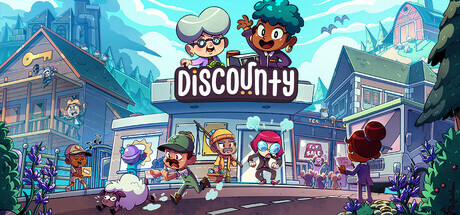 1) My MOST Anticipated Release:
Discounty
1) My MOST Anticipated Release:
Discounty
Expected to release in 2025, this is a game I’ve been awaiting eagerly for what feels like eons.
In this game, you design and manage your own supermarket, as well as establish partnerships with those in town. But your choices have consequences, and can result in the town turning against you, making it harder to run your supermarket empire.
I love tycoon management type games so this is a no brainer, but I also love that my choices will have consequences on the environment and town around me. It’s a game about capitalism and I love it!
 2) Doing It For The Vibes:
Hello Kitty Island Adventure
2) Doing It For The Vibes:
Hello Kitty Island Adventure
Since I enjoyed Animal Crossing New Horizons, this game is giving similar vibes as well as a wholesome and fun looking gameplay experience, which I am here for.
I know very little about this game and plan to go into it mostly blind, but I’m excited to try it out and see what I enjoy about it.
 3) Most Certain I’ll Love:
Moonlight Peaks
3) Most Certain I’ll Love:
Moonlight Peaks
I enjoy a good supernatural game, and Moonlight Peaks is a promising game on my wishlist to fulfil this need. Set to release in 2026, you live as a vampire in a magical town among werewolves, witches and mermaids.
You can brew potions, cast spells, date characters, grow cursed crops (we love to see a unique take on farming!) and unlock vampire abilities. I’m very excited for this game and think it will be well worth the long wait!
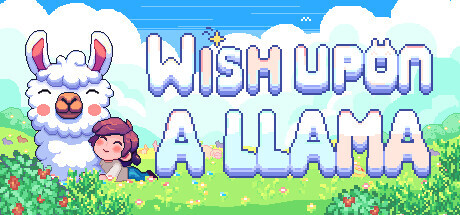 4) Most Curious to Try:
Wish Upon a Llama
4) Most Curious to Try:
Wish Upon a Llama
I’m not sure this is a game I’ll play a lot of, but I’m curious to try it because the art style looks amazing and it appears to be a cute, rancher game with a big focus on animal caretaking (which is definitely something we see more of as a support component to farming games rather than the main feature).
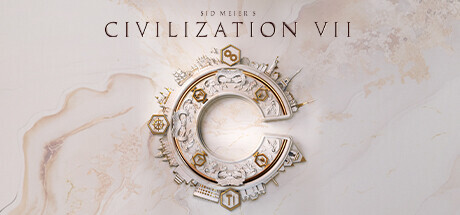 5) Obligatory Purchase:
Civilization VII
5) Obligatory Purchase:
Civilization VII
I will probably buy this game simply because I have the previous two installments and occasionally find myself diving back into them for a short but entertaining period of gameplay. I’ve always loved the Civilization franchise and love playing as all the different nation leaders. This is a game I can see myself getting many hours out of.
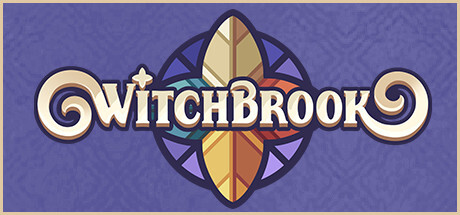 6) Most Eagerly Awaiting:
Witchbrook
6) Most Eagerly Awaiting:
Witchbrook
Though this game doesn’t appear to be coming any time soon, I am VERY keen for it to be released as it’s essentially my dream game.
You enrol at a witch college where you get to attend classes, complete assignments, learn spells and brew potions. It promises a great cast of characters who have routines, as well as an immersive world filled with social events and extra-curricular activities. This game feels like everything I wanted Hogwarts Legacy to be, but was let down by.
P.S: Another upcoming game very similar to this is Kitori Academy , which also looks great and will most likely buy, but I think I like the vibes and art style of Witchbrook better.
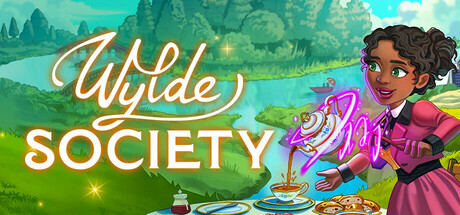 7) Most Exciting Concept:
Wylde Society
7) Most Exciting Concept:
Wylde Society
When I saw Studio Drydock was making another game, I immediately added this to my wishlist.
Studio Drydock created a farming game I absolutely loved playing called Wylde Flowers, which I highly recommend. In both games, you play as a witch, but their upcoming game is a period drama set in the past.
Instead of running a farm, you’ll run a magical boarding house, host a variety of social events including balls and tea parties, and host séances! I love the wide variety of new magical features that can be explored in this game, and think this game will be a true differentiator when it comes to cosy games.
 8) Notable Mention:
Haunted Chocolatier
8) Notable Mention:
Haunted Chocolatier
This is another game that is not coming anytime soon, but I’m excited to buy once it releases. Created by the same developer as Stardew Valley, this is a game about making chocolate and living in a haunted castle. You gather rare ingredients to make delicious chocolates and sell them in a chocolate shop.
It appears to include a lot of key elements I enjoy in a game, and I enjoyed Stardew Valley, so I’m excited to eventually play this when it comes out.



